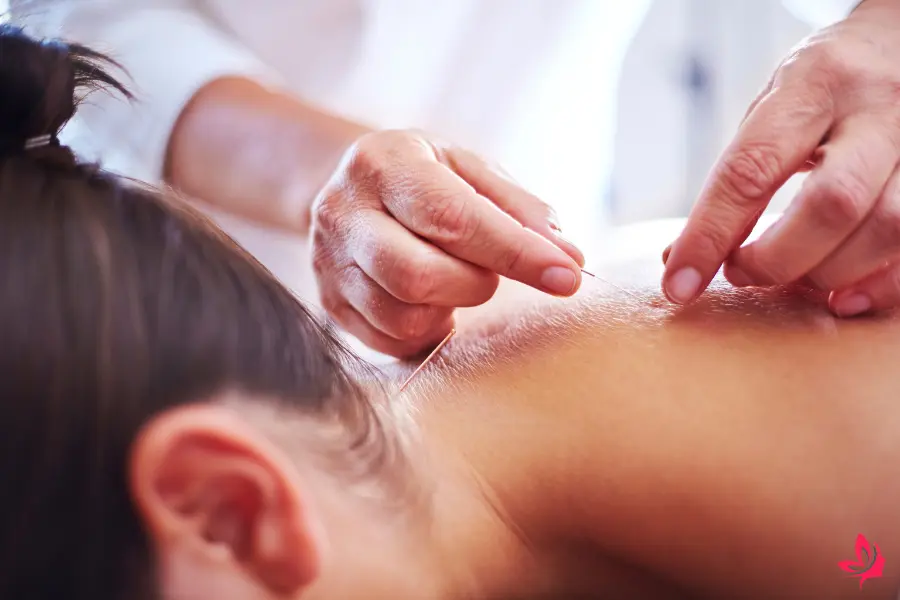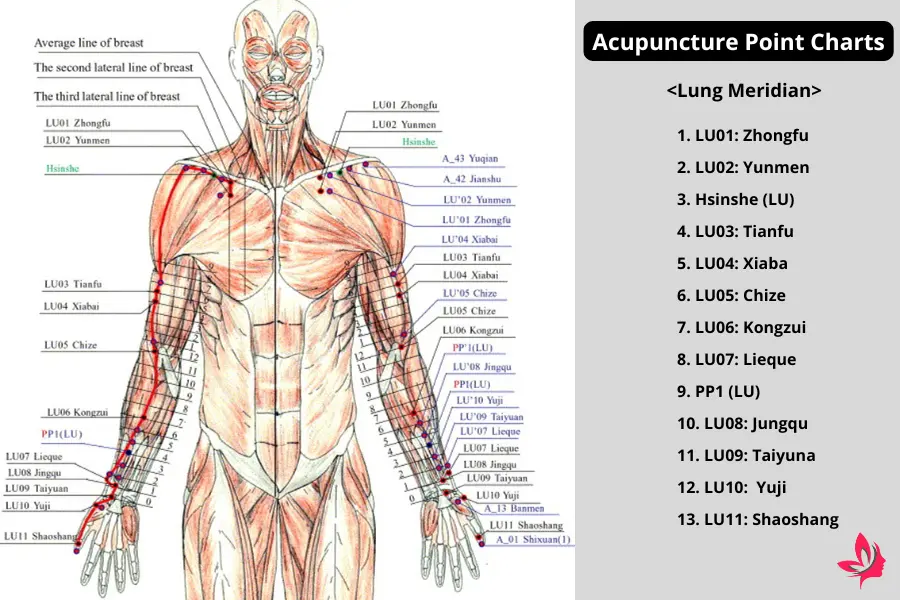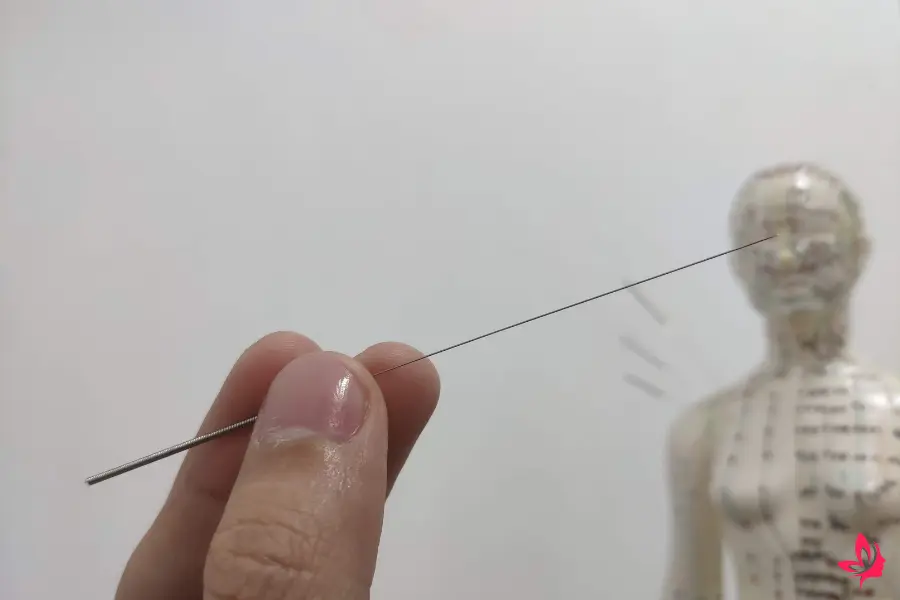Best Reflexology and Acupuncture Point Chart Posters are essential tools for anyone seeking natural relief. These charts provide clear, detailed illustrations that help users locate key pressure points to improve well-being and reduce stress.
High-quality chart posters can guide beginners and seasoned practitioners in mastering reflexology and acupuncture techniques.
The correct chart can make all the difference for those interested in incorporating these practices into their wellness routine. An acupuncture point chart often includes foot and hand reflexology points to offer a comprehensive view.
These charts can enhance one’s practice by pinpointing specific locations corresponding to different body areas.
Selecting a chart that uses high-quality materials and detailed illustrations ensures it will be a valuable resource for years to come.
Understanding Acupuncture Point Charts

Acupuncture point charts are crucial tools that help practitioners understand the various points in the human body where acupuncture treatment can be applied.
These charts serve as a guide for practitioners to improve health and manage pain through energy flow.
The Importance of Accurate Point Locations
Accurate point locations are essential in acupuncture practice. These points lie along meridian pathways, which are believed to conduct the energy flow throughout the body.
Incorrect placement during treatment can disrupt this balance and affect the desired therapeutic outcomes.
An acupuncture points chart provides detailed maps showing where each point is located, ensuring practitioners can administer treatment effectively.
Many charts, like archival ink, are made with quality materials to withstand frequent use.
Charts available on sites like Amazon offer a quick reference guide for professionals and novices alike.
Commonly Used Acupuncture Points
Some acupuncture points are more commonly used due to their effectiveness in treating various conditions.
For example, points along the lung meridian can help improve respiratory health and boost the immune system.
Acupuncture treatment often focuses on specific points in the spleen or large intestine channel, targeting digestive disorders or lower back pain.
Knowing these common points is particularly important for practitioners as these locations often yield higher success rates.
Well-researched charts provide a thorough overview of these essential areas, making them invaluable resources.
Traditional Chinese Medicine and Acupuncture
In traditional Chinese medicine, acupuncture is a cornerstone treatment that focuses on restoring the balance of qi, or energy flow, within the body.
This line of thought posits that blockages in energy flow can lead to ailments.
Practitioners use acupuncture point charts to identify and stimulate specific points to alleviate symptoms, such as neck pain or menstrual cramps.
The charts often integrate element theory, a foundational concept in traditional Chinese medicine, to link particular points with specific internal organs, such as the liver or kidney channel.
This allows for a more tailored approach to individual cases, blending ancient knowledge with modern practice.
Features to Look for in Acupuncture Point Charts

An ideal acupuncture points chart should be precise and reliable, with attention to quality and design.
Key features include explicit depictions of meridian pathways, specific point names, and well-organized information to assist in the practice of acupuncture or acupressure.
Quality of the Poster
The quality of the poster is essential for ease of use and durability.
Choosing posters made with archival ink ensures that the charts stay in perfect condition over time, retaining color and detail.
Additionally, a poster made from gloss or laminate materials protects against wear and tear, mainly if it’s frequently used as a reference guide in clinical settings.
High-quality printing enhances visibility and accurately identifies specific acupuncture points, such as those on the spleen or along the large intestine.
This precision is crucial for practitioners who need reliable charts to locate points like the conception vessel or command points.
Design and Layout Considerations
A well-thought-out design and layout enhance usability by clearly displaying key elements like point names, meridian pathways, and Chinese names for acupuncture points.
The optimal layout includes separating different channels, such as the lung meridian and stomach channels, enabling easy distinction and application.
Incorporating traditional Chinese medicine concepts and illustrations of main meridians can highlight important acupoints, including those affecting energy flow or assisting in conditions such as abdominal pain and neck pain.
Effective charts often label common point locations to improve navigation and use in educational and clinical environments.
Seller’s Listing and Delivery Time
When selecting an acupuncture poster, consider the seller’s listing details, which provide insights into product specifications and customer reviews.
Confirming delivery time is important to ensure the chart arrives when needed, particularly for practices or educational purposes.
The shipping service impacts the item’s final condition, so choosing a reliable service can prevent damage during transit.
If possible, full details about the seller’s listing should include materials, dimensions, and feedback from other buyers. These factors are essential in making an informed purchase.
Key Meridian Pathways and Channels

Exploring the meridian pathways in traditional Chinese medicine reveals the interconnected channels within the human body.
Understanding these allows for effective reflexology and acupuncture treatments, focusing on energy flow and therapeutic impact.
Main Meridians and Their Functions
In traditional Chinese medicine, the principal meridians, such as the lung and kidney channels, guide energy flow throughout the body. Each meridian relates to specific internal organs and has distinct functions.
The lung meridian, for example, influences breathing and the immune system, while the kidney channel affects water balance and qi regulation.
These channels are vital in treatments like acupuncture, serving as pathways for energy flow and blood circulation. They help address ailments like neck pain or menstrual cramps. Understanding each meridian’s function aids in creating an effective acupuncture treatment plan.
Specific Channels and Their Points
Channels such as the stomach and spleen pathways contain important acupoints influencing specific health outcomes.
The stomach channel, associated with digestive disorders and lower leg issues, includes points used for abdominal pain relief.
Running along the back, the bladder channel is known for treating lower back pain.
Each channel consists of specific points identified in acupuncture treatment. Combining these points on an acupuncture points chart helps practitioners develop targeted therapies.
Correctly identifying point locations can significantly improve treatment success rates.
Extraordinary Vessels and Their Impact
Extraordinary vessels, such as the conception and governing vessels, play a pivotal role in regulating qi circulation and connecting the twelve main meridians.
These vessels do not connect with specific organs but influence energy flow throughout the body.
The conception vessel, located along the midline on the front, is particularly essential for issues related to the abdomen.
Utilizing vessels in treatments can enhance energy balance and improve conditions like emotional issues or lower blood pressure.
Acupuncture Points for Common Ailments

Acupuncture is a practice rooted in traditional Chinese medicine, which uses specific points on the body to alleviate various ailments.
This section explores specific acupuncture points for managing lower back pain, digestive disorders, and emotional issues. Each point is strategically selected to improve energy flow and target particular concerns.
Points for Lower Back Pain
Acupuncture for lower back pain often focuses on the Bladder Channel. Points like BL23 and BL25 are commonly used acupuncture points for this ailment.
BL23, located at the lower back, targets the kidney channel, promoting circulation of qi and providing pain relief.
BL25, also on the lower back, aims to harmonize the intestines’ energy flow and relieve discomfort.
Stimulating these points can alleviate tension and boost recovery during peak periods of stress or physical activity. The effectiveness of acupuncture may vary based on individual cases and specific conditions.
Acupuncture for Digestive Disorders
The Stomach Channel is critical for digestive disorders. Points like ST36 are vital for addressing issues like bloating, abdominal pain, and digestion.
ST36, found on the lower leg, enhances the function of the stomach and spleen, assisting the body in nutrient absorption.
This point improves overall digestive health and can lower blood pressure while boosting the immune system.
The Conception Vessel (CV10 and CV12) can help balance energy in the digestive organs, relieving uncomfortable symptoms.
These points help provide support through a quick-reference acupuncture points chart.
Addressing Emotional Issues
For emotional issues, acupuncture targets the Heart and Lung Meridians. Points like HE7 and LU9 are essential for promoting calm and reducing anxiety.
HE7, on the wrist, calms the spirit and balances the heart’s energy, while LU9, on the wrist, aids in lung function and supports a steady flow of energy in the body.
These specific acupuncture points help improve emotional well-being and mental clarity.
An acupuncture poster can help identify these meridian pathways for energy balance and enhancing psychological health.
Choosing the Right Acupuncture Point Chart

When selecting the best acupuncture point chart, consider its quality and details, along with practical aspects like shipping. Specific acupuncture points and quality illustrations ensure that each chart is a reliable reference.
Evaluating Different Chart Options
The choice of an acupuncture points chart should begin with evaluating its content accuracy and the clarity of its illustrations.
A chart detailing critical points like the lung meridian and spleen channel guides beginners and professionals.
Charts that display meridian pathways and specific points help understand the flow of energy and blood throughout the human body.
Quality charts often include Chinese names for reference points, which align with traditional Chinese medicine.
A quick reference guide categorizing command points and confluent points is beneficial.
Ensure the chart features commonly used acupuncture points, which can assist in pain relief and ailments like lower blood pressure and digestive disorders.
A chart’s excellent quality can be identified through techniques like archival ink and well-explained point locations.
Shipping Service and Item Location
Shipping service and item location are critical factors when ordering an acupuncture poster.
Buyers should check the seller’s listing for precise delivery times and service details to ensure the chart arrives in perfect condition and within a reasonable timeframe.
Choosing a seller in proximity to the buyer can minimize peak periods for shipping delays and provide faster service. This is especially beneficial when quick access to accurate reference material is needed.
Understanding the item location can also impact logistical considerations, primarily when being used in clinical settings that rely on such charts as a cornerstone of acupuncture practices.
Accurate shipping details and reliable services reassure practitioners about the chart’s timely arrival.
Final Thoughts
Reflexology and acupuncture point charts are valuable tools for understanding the body’s inner workings. They can enhance learning and practice for beginners and seasoned professionals alike.
Choosing the right chart involves considering factors like design, readability, and the user’s specific needs. Many prefer detailed charts, while others might opt for simpler, visual-friendly designs. A foot reflexology chart might be ideal for those focusing on foot therapy.
Acupuncture point charts offer detailed views of different meridians and pressure points. These can be especially useful for those delving into traditional Chinese medicine techniques. Some charts are double-sided and laminated for durability and ease of use.
Having these charts in spaces like clinics or wellness centers can significantly assist in educating clients and patients. They serve as visual aids that help explain treatments better.
Key Takeaways
- Reflexology charts help learn and practice pressure point therapies.
- Design and readability are essential factors when choosing a chart.
- Acupuncture point charts provide detailed insights into meridians.
- Charts can enhance patient understanding in clinical settings.
Users can explore and benefit from reflexology and acupuncture more effectively with the correct chart. Such a tool can serve educational and practical purposes, enhancing therapeutic experiences.
Frequently Asked Questions
Acupuncture and acupressure involve pinpointing specific spots on the body for therapeutic effects. Understanding these points can be essential for safety and effectiveness.
What are the 5 forbidden acupuncture points?
These points are considered unsafe in certain conditions and might include spots like the Spleen 6 and Bladder 60. A comprehensive acupuncture point chart helps practitioners avoid these areas during pregnancy and other sensitive times.
What are the 5 main acupuncture points?
Key acupuncture points include the LI4 (Hegu), PC6 (Neiguan), ST36 (Zusanli), LV3 (Taichong), and GV20 (Baihui). These points are commonly used for their wide-ranging benefits and can be found on most acupuncture charts.
What are the acupuncture points for feet?
Foot acupuncture points, often illustrated in a foot reflexology chart, connect to various body parts and organs. Common points on the feet include Kidney 1, Liver 3, and Stomach 36.
What are the 12 acupuncture points?
The 12 main acupuncture points are linked to the primary meridians and serve various purposes. These points are crucial for different therapies and are prominently featured on acupuncture charts.
What are the adverse side effects of acupuncture?
Some may experience minor issues after sessions, such as soreness, bruising, or faintness. Ensuring proper technique and qualified practitioners minimizes risks.
When should acupuncture be avoided?
Acupuncture might be unsuitable for individuals with bleeding disorders, certain skin conditions, or during pregnancy. It is vital to consult healthcare providers before proceeding.
Who shouldn’t use acupuncture?
People with certain health conditions or those taking blood thinners should approach acupuncture cautiously and consult a healthcare provider.
Which acupuncture points hurt the most?
Pain sensitivity varies, but some points on the hands and feet might be more tender. Individual tolerance levels often determine discomfort.
Who is not a good candidate for acupuncture?
Individuals with severe bleeding disorders or skin infections should avoid acupuncture. Consulting with a medical professional can provide guidance.
How do you know if acupuncture is working?
Positive changes may indicate effectiveness. These include decreased pain, improved relaxation, or enhanced energy.
Tracking progress can help. Regular sessions and monitoring results are essential for this.




